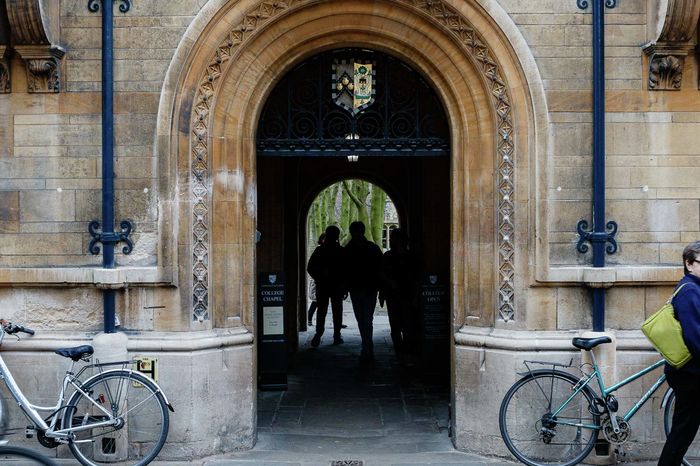How to breathe new life into Cambridge’s chapels
College chapels can serve the entire community, argues Johana Trejtnar

With a new production of Macbeth in King’s College chapel, and regular discussions taking place in Gonville & Caius’ chapel, it is clear that Cambridge’s chapels are changing. Unlike eight-hundred years ago, today’s Cambridge is religiously diverse and Christian services can no longer serve as vehicles of gathering and reflection to the entire college community. The only way for chapels to remain at the centre of college life, and to retain their centuries-old purpose of bringing the college together, is to find new ways to cater to a varied student body.
When Dominican friars first settled in Cambridge in 1238, fifty years before the first Cambridge college was founded, they built their chapel just a few yards from where the Emma chapel stands today. For them, the chapel was a space of contemplation, prayer, and community – somewhere to gather, reflect, and share in something greater than themselves.
Since then, centuries have passed, and the student body has massively diversified, welcoming students with different faiths and beliefs. It has become impossible for college chapels to retain both of their original purposes: that of bringing the whole community together, and of providing a space for practice exclusively Christian faith. Cambridge chapels have addressed this issue in various ways over the past years, including offering seminars on whether Jesus was “woke,” or building separate centres for students of all beliefs. However, the fact remains that no matter how open a chapel’s dean is and how beautiful choral music can be, Christian services can never offer the same thing to Cambridge’s non-Christian students as it does to its Christian ones.
“Instead of at sermons, gaping monsters on the ceiling stare down at a final savasana”
In my experience, ‘Chapel yoga,’ a practice that takes place at Emmanuel College, tries to create a new offer. At Emma, students with colorful yoga mats and speaker-phone instrumentals periodically replace the classic cassocks and organ music in the nave of the 1670s chapel. Instead of at sermons, gaping monsters on the ceiling stare down at a final savasana.
Opening up the chapel to yoga does a lot more than provide space for people to exercise. While chapel yoga is not for everyone, it demystifies the chapel as an exclusively Christian place of worship for all students. Of course, there is a thin line between non-religious chapel events and insensitivity to the chapel’s past and present as a place of reflection and chapel yoga toes this line. However, while not tied to a religion (in the way that it is practiced at Emma), the yoga can serve a similar purpose to that which sermons embody – becoming an escape from the hustle of Cambridge, a time of reflection when the outside world temporarily comes to a halt.
“While chapel yoga is not for everyone, it demystifies the chapel as an exclusively Christian place of worship”
Just like Cambridge was not a place for non-Christians eight-hundred years ago, it also was not a place for women. And it is women who make up the vast majority of chapel-yoga-goers. It is no coincidence that chapel yoga was a popular activity during Pink week, as it symbolises the repurposing not only of a religious space by non-religious practice, but of a traditionally male space by allowing women’s bodies to take up space.
While chapel yoga is brilliant, there is one aspect of the practice that sits awkwardly with Cambridge’s past and present: the spiritual history of yoga itself. In the past few decades yoga, a practice originating in ancient India, has become increasingly commodified. Some even refer to the Western appropriation of yoga as a 21st century form of colonialism. At a university that grew rich from investments into the slave trade and colonisation, practicing yoga in a traditionally Christian religious space poses an irony that is central to Cambridge itself, one that sit between historic exploitation and current-day appreciation.
Chapel yoga creates a crack in hectic Cambridge time, a place for pause and quiet reflection. But, yoga at the Emma chapel is just one of many secular events happening in religious spaces around Cambridge. Chapel plays, debates, and other events all help the Cambridge chapels remain what they were built to be hundreds of years ago: spaces for everyone.
Want to share your thoughts on this article? Send us a letter to letters@varsity.co.uk or by using this form.
 Comment / Cambridge’s tourism risks commodifying students18 April 2025
Comment / Cambridge’s tourism risks commodifying students18 April 2025 News / Cambridge student numbers fall amid nationwide decline14 April 2025
News / Cambridge student numbers fall amid nationwide decline14 April 2025 News / Greenwich House occupiers miss deadline to respond to University legal action15 April 2025
News / Greenwich House occupiers miss deadline to respond to University legal action15 April 2025 Comment / The Cambridge workload prioritises quantity over quality 16 April 2025
Comment / The Cambridge workload prioritises quantity over quality 16 April 2025 Sport / Cambridge celebrate clean sweep at Boat Race 202514 April 2025
Sport / Cambridge celebrate clean sweep at Boat Race 202514 April 2025





